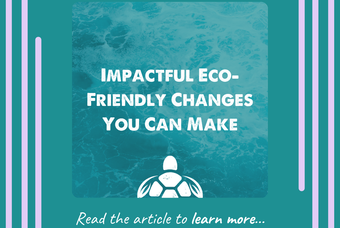The News-Hub/ Articles
Back to Articles
Recommended Articles
Sustainable Cities of the World and Their Goals for the Future
Cities are home to a growing majority of the world's population. According to the World Cities Report 2020 by UN-Habitat, 55% of people live in urban areas, and this figure is estimated to grow to at least 70% by 2050. This rising urbanisation is a complex challenge but also a great opportunity for cities to continue advancing sustainable development.
What is a Sustainable City?
At its core, a sustainable city is one that meets the needs of the present and offers a good quality of life to current citizens, without compromising the opportunities of future generations.
When I first became interested in this topic, I assumed that sustainability in cities referred purely to an ecological focus. But sustainability goes beyond environmental targets. It has four different dimensions, the so-called pillars of sustainability: environment, society, culture and economy. The four are closely intertwined and need to be carefully balanced to achieve the goals of the present and the future. So, what would a sustainable city look like in reality? And what is needed for a truly sustainable city to thrive?
Environmentally, sustainable cities have a strong understanding of the urgency of the global climate crisis and invest in a clear environmental strategy.
From a society point of view, they make positive changes to improve areas such as health, education, income inequality, work-life balance, crime and the cost of living.
Culturally, sustainable cities aim to be inclusive to all people and give everyone equal opportunities.
Finally, well-planned and managed cities work to improve the health of the local business environment and provide economic opportunities for all.
Sustainable cities are all about balance.
Why Are Sustainable Cities Important?
Rising urbanisation means the sustainability of cities is of the highest importance. According to the World Wide Fund for Nature (WWF), “depending on how we develop and manage cities and their infrastructure in the coming decades, cities could become either a source of inclusive sustainable development or a force for environmental destruction”.
With their growing populations, cities are centres of consumption, resource use and waste. Consequently, they are responsible for over 70% of global CO2 emissions. Poverty and inequality are also growing issues in many.
Therefore, cities must aim to be more sustainable and reduce their ecological footprint. By making smart choices for housing, transport, energy, green space, water and waste, cities can reconcile economic growth and the environment. Well-designed and managed cities can create better living conditions for their citizens. They are also better prepared to respond with agility to major environmental, social and economic challenges.
Sustainable City Examples: Cities Leading the Way
Here are a few cities that are leading the way in clean energy, sustainable development and climate solutions.
Copenhagen is widely recognised as a leader in sustainability and green economy. It aims to be the world's first capital to be carbon neutral by 2025. It prioritises green ways to get around the city: solar-powered boats, electric buses, pedestrian-friendly streets, and, of course, the cycle superhighways. Thanks to the 375km of bike lanes, 45% of Copenhagen's residents commute by bike every day. What's more, the city has an energy-efficient district heating and cooling system that connects to nearly every household.
Singapore's Sustainable Development Blueprint (Green Plan) outlines the city’s sustainability goals leading up to 2030. The targets include improving energy efficiency by 35%, ensuring 80% of its buildings are certified green and that 80% of households are within a 10-minute walk to a train station. The city has made drastic changes in transportation by building effective public transport systems and limiting car ownership amongst its residents. To raise residents' quality of life by enhancing greenery in the city, Gardens by the Bay, an urban nature park spanning 240 acres, was also created.
Stockholm has a long history of ambitious climate plans. Thanks to the city's successful environmental efforts, it was selected as the first European Green Capital in 2010. It aims to be fossil fuel-free by 2040. 99% of Stockholm's solid waste is recycled. Biofuel, generated from sewage, is available at petrol stations around the city. And 96% of hotels in Stockholm have environmental certification.
Vancouver's goal is to become the greenest city in the world. And it's making great headways to achieve this. The city's emissions are one of the lowest in North America and it's committed to transitioning to 100% renewable energy. Urban planning is very high on the agenda with the city aiming for all buildings in the city to be carbon neutral by 2030. It also aims to go zero-waste by 2040. Pedestrians and cyclists are a priority in Vancouver and the goal is for 90% of its residents to live within an easy walk of their daily needs by 2030.
Lisbon was awarded the EU Commission’s Green Capital for 2020 and celebrated by planting around 20,000 trees. The city is committed to protecting and enhancing its natural areas, while also providing quality outdoor recreational space for its citizens – 85% of Lisbon’s residents live within 300m of a green space. The use of electric vehicles in the city is accelerating with plenty of car charging points, electric bikes sharing schemes and electric buses. Even tourist tuk-tuks in the city have been electric since 2017.
What Can We Learn from Sustainable Cities?
The achievements of the top sustainable cities show that progress is possible. While no two cities are the same, there are lessons and best practices that can be drawn, shared and adapted to help build more sustainable cities for the future:
- It all begins with a clear strategy: leading sustainable cities have well-defined green plans (e.g. 'rewilding' certain areas to increase local biodiversity) with ambitious but achievable goals.
- They have a strong focus on improving the efficiency of systems to drive a reduction in the amount of energy and resources used.
- They prioritise investment in sustainable infrastructures to facilitate more sustainable forms of mobility.
- They focus on holistic, long-term urban planning.
- Successful citizen engagement is critical and the community is at the heart of their sustainable initiatives as a result.
- Eco-innovation is encouraged.
Get Involved
The future of people and the planet will largely be determined by how day-to-day urban life evolves. Although we may not be able to sway bigger developments in our cities, we can all contribute to building more sustainable cities and communities.
The Global Goals (Sustainable Development Goals or SDGs) website gives a few ideas on how we can get involved:
- Shop, eat and drink locally. Support your neighbourhood businesses to help strengthen your community.
- Get around in a sustainable way – cycle, walk or take public transport as much as possible.
- Find and share information and useful tips for your everyday life that can make a difference.
- Take advantage of your right to vote in your local community.
- Take care of green and public spaces in your area and encourage others to do the same.
Do you live in one of the world's sustainable cities? Or are you an urban dweller who's helped your area become better for both its residents and the planet? Let us know in the comments below!
1 comment
Empty content. Please select category to preview











This year much of London has undergone major changes to encourage more active travel. It won’t return to normal as people feel the many benefits… Some areas, such as my own borough – Wandsworth – are digging in trying to keep the old, chaotic, dirty London even though more than half of people here don’t own a car.